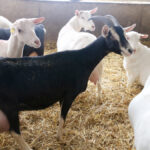The Facebook posts started sometime last year: “Orange Juice may soon contain pig genes. Monsanto curing hunger with cancer. GMO fact of the day.”
The exact wording has varied, but some version of these sensationalized stories — complete with disturbing images and a cry for someone to please think of the children — has appeared time and time again in my social media feeds.
It reached a fever pitch in May during “March Against Monsanto.” Eyes were rolled. Pages unfollowed. Friends unfriended. If March Against Monsanto achieved anything in my house that day, it was that I was surprised that otherwise intelligent people — people I like, people I respect — could be so taken in by junk science.
Read Also

Guarding against misinformation: Do you believe in house hippos?
Misinformation and disinformation run rampant in today’s digital age. Farmers must be wary of the digital dangers and know how to keep themselves safe.
What can I say? The March Against Monsanto folks have good PR people.
Some might point to federal government cuts to the agriculture budget — to the tune of $300 million — as the problem. Less money overall means less money for research. But I believe the problem lies not in funding research but, rather, in communicating its results.
The need for peer-reviewed ag research is real, but even greater is the need to share that research effectively.
To a large degree, the science doesn’t matter, not really. Anti-GMO proponents have proven that time and time again. What matters is getting that science into the hands of people who can use it, in a form they can use.
Producers have some responsibility there. We often expect producers to be the champions of the industry, but I think that expectation is a bit unfair. Producers should do what they do best: grow high-quality crops and raise high-quality livestock. But in doing so, they must remember that their ability to grow better crops and produce better livestock can usually be attributed to research investments funded by their tax dollars and their service fees collected by commodity groups.
In my former life working in Alberta’s pulse industry, I had a chance to chat about research investments with Sheri Strydhorst, agronomy research scientist at Alberta Agriculture and Rural Development. She shared an interesting statistic with me:
“In 2007, the average pea production in the province was 31.6 bu/ac. In 2012, it was 40.7 bu/ac. On average, between that time period, growers increased their pea yield by 9.1 bu/ac, and at a price of $8.32 per bushel, pulse growers are able to earn an extra $75 per acre without additional input costs. Part of that increase in yield — and, in turn, income — can be attributed to new genetics.”
We can see that research is important — yet too often, producers request refundable levy dollars back rather than investing them in their industries. That’s their right, but Alberta researchers largely rely on that funding, and without it, their research must continue at a reduced level or, in some cases, not at all.
The people funding and conducting the research have a role to play as well. Technical research reports benefit no one sitting on a shelf collecting dust (or, worse yet, published in a scientific journal that no producer will ever pick up.) These organizations conduct cutting-edge research, but that message hasn’t made it to the masses.
That’s where the media — comes in. We need to do a better job of sharing the struggles and triumphs of researchers to give farmers the information they need to produce more, produce better. Part of that lies in connecting with researchers to stay on top of the work they’re doing, but a larger part lies in understanding how that research benefits producers and the agriculture industry as a whole.
Only then can we make sure the right messages make it to the right people in the right way.
Ag research is vitally important. No one can deny that. But when people are accustomed to easy-to-digest, on-demand information, as opposed to tedious technical reports you have to pay a buck to read online, that important ag research must not only be available but also understandable for the people who need it.
Because when junk science wins, we all lose.














